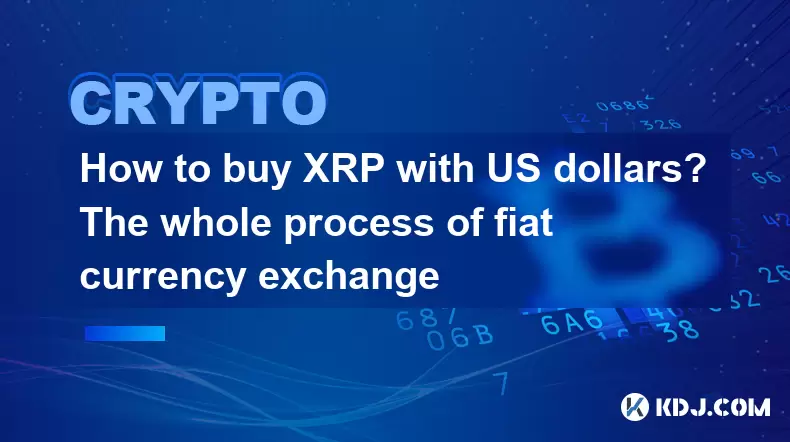-
 Bitcoin
Bitcoin $105,953.9980
3.06% -
 Ethereum
Ethereum $2,445.3292
6.68% -
 Tether USDt
Tether USDt $1.0006
-0.03% -
 XRP
XRP $2.1968
7.03% -
 BNB
BNB $643.2903
2.13% -
 Solana
Solana $144.2799
3.82% -
 USDC
USDC $1.0000
-0.03% -
 TRON
TRON $0.2739
0.49% -
 Dogecoin
Dogecoin $0.1642
4.47% -
 Cardano
Cardano $0.5834
5.49% -
 Hyperliquid
Hyperliquid $38.0741
2.80% -
 Sui
Sui $2.7741
7.56% -
 Chainlink
Chainlink $13.4107
11.26% -
 Bitcoin Cash
Bitcoin Cash $450.4828
-0.61% -
 UNUS SED LEO
UNUS SED LEO $9.1301
0.64% -
 Stellar
Stellar $0.2476
5.49% -
 Avalanche
Avalanche $18.0637
5.09% -
 Toncoin
Toncoin $2.9066
2.43% -
 Shiba Inu
Shiba Inu $0.0...01160
4.01% -
 Hedera
Hedera $0.1527
8.00% -
 Litecoin
Litecoin $84.6122
2.37% -
 Monero
Monero $317.6076
5.76% -
 Ethena USDe
Ethena USDe $1.0008
0.02% -
 Polkadot
Polkadot $3.4519
5.27% -
 Dai
Dai $1.0000
-0.03% -
 Bitget Token
Bitget Token $4.2835
5.62% -
 Uniswap
Uniswap $7.0443
9.78% -
 Pepe
Pepe $0.0...09964
7.41% -
 Pi
Pi $0.5391
4.64% -
 Aave
Aave $264.1743
11.26%
How to buy XRP with US dollars? The whole process of fiat currency exchange
To buy XRP with USD, convert dollars to BTC or ETH on exchanges like Coinbase or Kraken, then trade for XRP, and secure it in a personal wallet.
May 10, 2025 at 05:07 pm

Purchasing XRP with US dollars involves several steps, including converting your fiat currency into a cryptocurrency that can be directly traded for XRP. This process can be completed through various platforms, each with its own set of procedures and requirements. In this article, we will guide you through the entire process of buying XRP with US dollars, ensuring you understand each step thoroughly.
Choosing a Suitable Exchange Platform
The first step in buying XRP with US dollars is to select a reputable cryptocurrency exchange that supports both USD deposits and XRP trading. Some popular exchanges that meet these criteria include Coinbase, Kraken, and Binance.US.
- Coinbase is known for its user-friendly interface and is suitable for beginners.
- Kraken offers advanced trading features and is preferred by more experienced traders.
- Binance.US provides a wide range of trading pairs and competitive fees.
When choosing an exchange, consider factors such as security, fees, user interface, and the availability of XRP trading pairs.
Creating and Verifying Your Account
Once you have selected an exchange, you will need to create an account. This typically involves providing your email address, setting a strong password, and agreeing to the exchange's terms of service.
- Visit the exchange's website and click on the "Sign Up" or "Register" button.
- Enter your email address and create a password.
- Verify your email address by clicking on the confirmation link sent to your inbox.
- Complete the KYC (Know Your Customer) process. This usually involves providing personal information such as your full name, date of birth, and address. You may also need to upload a government-issued ID and a proof of address document.
- Wait for your account to be verified. This can take anywhere from a few minutes to several days, depending on the exchange.
Depositing US Dollars into Your Exchange Account
After your account is verified, you can deposit US dollars into your exchange wallet. The method of deposit can vary depending on the exchange, but common options include bank transfers, credit/debit cards, and PayPal.
- Navigate to the deposit section of your exchange account.
- Select USD as the currency you wish to deposit.
- Choose your preferred deposit method. For example, if you are using a bank transfer, you will need to provide your bank account details and initiate the transfer from your bank.
- Follow the on-screen instructions to complete the deposit. This may involve entering additional information or confirming the transaction.
- Wait for the funds to be credited to your exchange account. This can take a few business days for bank transfers or be instant for credit/debit card deposits.
Converting US Dollars to a Cryptocurrency
Since most exchanges do not offer direct USD to XRP trading pairs, you will need to convert your US dollars into a cryptocurrency that can be traded for XRP. The most common cryptocurrency for this purpose is Bitcoin (BTC) or Ethereum (ETH).
- Navigate to the trading section of your exchange account.
- Select the USD/BTC or USD/ETH trading pair.
- Enter the amount of USD you wish to convert and review the estimated amount of BTC or ETH you will receive.
- Confirm the trade. The BTC or ETH will be credited to your exchange wallet.
Trading Cryptocurrency for XRP
Now that you have BTC or ETH in your exchange wallet, you can trade it for XRP.
- Navigate to the trading section of your exchange account.
- Select the BTC/XRP or ETH/XRP trading pair.
- Enter the amount of BTC or ETH you wish to trade and review the estimated amount of XRP you will receive.
- Confirm the trade. The XRP will be credited to your exchange wallet.
Withdrawing XRP to a Personal Wallet
For added security, it is recommended to transfer your XRP from the exchange to a personal wallet. There are several types of wallets available, including hardware wallets, software wallets, and paper wallets.
- Choose a suitable XRP wallet. Popular options include Ledger Nano S (hardware wallet), Exodus (software wallet), and Toast Wallet (software wallet).
- Set up your wallet according to the manufacturer's instructions. This may involve downloading software, creating a new wallet address, and securing your private keys.
- Navigate to the withdrawal section of your exchange account.
- Enter your XRP wallet address and the amount of XRP you wish to withdraw.
- Confirm the withdrawal. The XRP will be transferred to your personal wallet, and the transaction may take a few minutes to be confirmed on the XRP ledger.
Frequently Asked Questions
Q: Can I buy XRP directly with US dollars on all exchanges?
A: No, not all exchanges offer direct USD to XRP trading pairs. You may need to convert your US dollars into a cryptocurrency like Bitcoin or Ethereum first before trading for XRP.
Q: How long does it take to buy XRP with US dollars?
A: The entire process can take anywhere from a few minutes to several days, depending on factors such as the time it takes to verify your account, deposit funds, and complete the trades.
Q: Are there any fees associated with buying XRP with US dollars?
A: Yes, there are typically fees involved at various stages of the process, including deposit fees, trading fees, and withdrawal fees. These fees vary depending on the exchange and the method of deposit or withdrawal.
Q: Is it safe to store XRP on an exchange?
A: While exchanges have security measures in place, it is generally safer to store your XRP in a personal wallet, especially for long-term storage. Exchanges can be vulnerable to hacks and other security breaches.
Disclaimer:info@kdj.com
The information provided is not trading advice. kdj.com does not assume any responsibility for any investments made based on the information provided in this article. Cryptocurrencies are highly volatile and it is highly recommended that you invest with caution after thorough research!
If you believe that the content used on this website infringes your copyright, please contact us immediately (info@kdj.com) and we will delete it promptly.
- BlockDAG: The Cryptocurrency ROI Revolution
- 2025-06-25 06:45:12
- Layer 1 Crypto Token Presales: What's Hot in the NYC Crypto Scene?
- 2025-06-25 06:30:12
- Ethereum, Investors, and Memecoins: A Wild Ride on the Crypto Coaster
- 2025-06-25 06:30:12
- SEI Price Explodes: Is This Just the Beginning?
- 2025-06-25 07:05:13
- Meme Coins Mania: Arctic Pablo and the Hunt for Presale Gains
- 2025-06-25 06:50:13
- Mark Cuban, Meme Coins, and Scams: A Cautionary Tale
- 2025-06-25 07:05:13
Related knowledge

How to customize USDT TRC20 mining fees? Flexible adjustment tutorial
Jun 13,2025 at 01:42am
Understanding USDT TRC20 Mining FeesMining fees on the TRON (TRC20) network are essential for processing transactions. Unlike Bitcoin or Ethereum, where miners directly validate transactions, TRON uses a delegated proof-of-stake (DPoS) mechanism. However, users still need to pay bandwidth and energy fees, which are collectively referred to as 'mining fe...

USDT TRC20 transaction is stuck? Solution summary
Jun 14,2025 at 11:15pm
Understanding USDT TRC20 TransactionsWhen users mention that a USDT TRC20 transaction is stuck, they typically refer to a situation where the transfer of Tether (USDT) on the TRON blockchain has not been confirmed for an extended period. This issue may arise due to various reasons such as network congestion, insufficient transaction fees, or wallet-rela...

How to cancel USDT TRC20 unconfirmed transactions? Operation guide
Jun 13,2025 at 11:01pm
Understanding USDT TRC20 Unconfirmed TransactionsWhen dealing with USDT TRC20 transactions, it’s crucial to understand what an unconfirmed transaction means. An unconfirmed transaction is one that has been broadcasted to the blockchain network but hasn’t yet been included in a block. This typically occurs due to low transaction fees or network congestio...

How to check USDT TRC20 balance? Introduction to multiple query methods
Jun 21,2025 at 02:42am
Understanding USDT TRC20 and Its ImportanceUSDT (Tether) is one of the most widely used stablecoins in the cryptocurrency market. It exists on multiple blockchain networks, including TRC20, which operates on the Tron (TRX) network. Checking your USDT TRC20 balance accurately is crucial for users who hold or transact with this asset. Whether you're sendi...

What to do if USDT TRC20 transfers are congested? Speed up trading skills
Jun 13,2025 at 09:56am
Understanding USDT TRC20 Transfer CongestionWhen transferring USDT TRC20, users may occasionally experience delays or congestion. This typically occurs due to network overload on the TRON blockchain, which hosts the TRC20 version of Tether. Unlike the ERC20 variant (which runs on Ethereum), TRC20 transactions are generally faster and cheaper, but during...

The relationship between USDT TRC20 and TRON chain: technical background analysis
Jun 12,2025 at 01:28pm
What is USDT TRC20?USDT TRC20 refers to the Tether (USDT) token issued on the TRON blockchain using the TRC-20 standard. Unlike the more commonly known ERC-20 version of USDT (which runs on Ethereum), the TRC-20 variant leverages the TRON network's infrastructure for faster and cheaper transactions. The emergence of this version came as part of Tether’s...

How to customize USDT TRC20 mining fees? Flexible adjustment tutorial
Jun 13,2025 at 01:42am
Understanding USDT TRC20 Mining FeesMining fees on the TRON (TRC20) network are essential for processing transactions. Unlike Bitcoin or Ethereum, where miners directly validate transactions, TRON uses a delegated proof-of-stake (DPoS) mechanism. However, users still need to pay bandwidth and energy fees, which are collectively referred to as 'mining fe...

USDT TRC20 transaction is stuck? Solution summary
Jun 14,2025 at 11:15pm
Understanding USDT TRC20 TransactionsWhen users mention that a USDT TRC20 transaction is stuck, they typically refer to a situation where the transfer of Tether (USDT) on the TRON blockchain has not been confirmed for an extended period. This issue may arise due to various reasons such as network congestion, insufficient transaction fees, or wallet-rela...

How to cancel USDT TRC20 unconfirmed transactions? Operation guide
Jun 13,2025 at 11:01pm
Understanding USDT TRC20 Unconfirmed TransactionsWhen dealing with USDT TRC20 transactions, it’s crucial to understand what an unconfirmed transaction means. An unconfirmed transaction is one that has been broadcasted to the blockchain network but hasn’t yet been included in a block. This typically occurs due to low transaction fees or network congestio...

How to check USDT TRC20 balance? Introduction to multiple query methods
Jun 21,2025 at 02:42am
Understanding USDT TRC20 and Its ImportanceUSDT (Tether) is one of the most widely used stablecoins in the cryptocurrency market. It exists on multiple blockchain networks, including TRC20, which operates on the Tron (TRX) network. Checking your USDT TRC20 balance accurately is crucial for users who hold or transact with this asset. Whether you're sendi...

What to do if USDT TRC20 transfers are congested? Speed up trading skills
Jun 13,2025 at 09:56am
Understanding USDT TRC20 Transfer CongestionWhen transferring USDT TRC20, users may occasionally experience delays or congestion. This typically occurs due to network overload on the TRON blockchain, which hosts the TRC20 version of Tether. Unlike the ERC20 variant (which runs on Ethereum), TRC20 transactions are generally faster and cheaper, but during...

The relationship between USDT TRC20 and TRON chain: technical background analysis
Jun 12,2025 at 01:28pm
What is USDT TRC20?USDT TRC20 refers to the Tether (USDT) token issued on the TRON blockchain using the TRC-20 standard. Unlike the more commonly known ERC-20 version of USDT (which runs on Ethereum), the TRC-20 variant leverages the TRON network's infrastructure for faster and cheaper transactions. The emergence of this version came as part of Tether’s...
See all articles
























































































